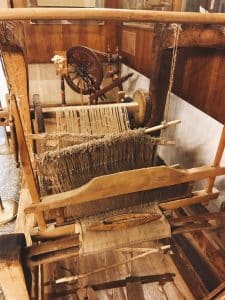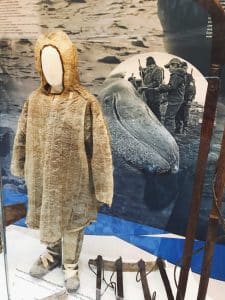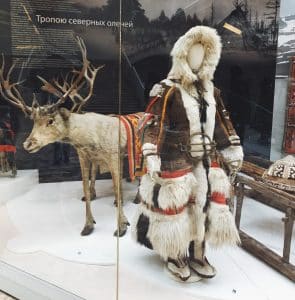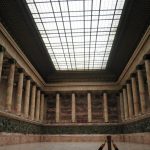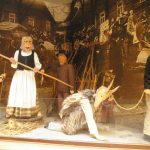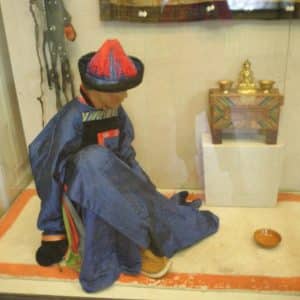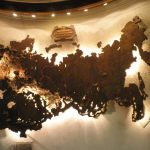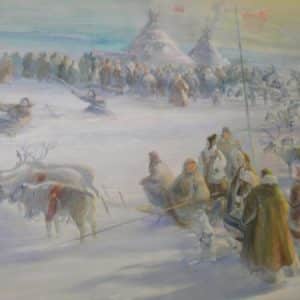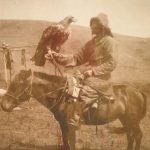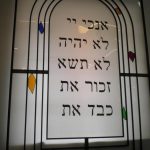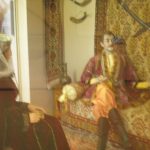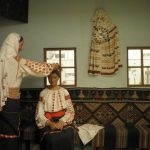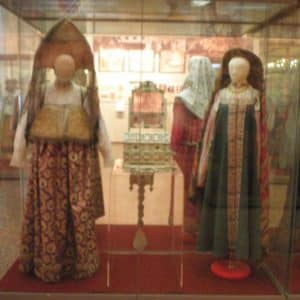If someone asks you to describe “Russian,” the first images that probably come to mind include burly Cossacks, round babushkas with head coverings, matryoshkas, etc. While these depictions partially represent Russia, the country includes a variety of ethnic groups (and one included many, many, more before the fall of the USSR). The interaction of these various cultural traditions have shaped, and continue to influence, the essence of Russia. The Russian Museum of Ethnography, then, serves as the perfect stop for those interested in learning more about Russia’s anthropological and ethnological history.
About The Museum of Russian Ethnography
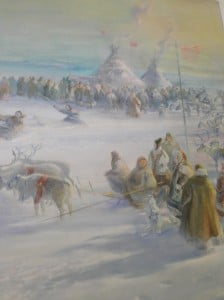
The Russian Museum of Ethnography is a stunning palace situated next to the Russian Museum of Art. It features wings dedicated to broad categorizations of ethnic groups based on their major geography: European Russia (i.e. Russians, Ukrainians, Belarusians, Moldavians, Baltic peoples, Scandinavians, Jews, Bashkirs, Tatars, etc.), the Caucasus and Crimea (Georgians, Azerbaijanis, Armenians, etc.), Central Asia (Kazakhs, Kirghizs, Uzbeks, Turkmen, Tajikistanis, etc.) and Siberia/ the Far East (i.e. Buryats, Yakuts, etc.). While many of the eponymous countries that these ethnicities come from are no longer a part of Russia, the ethnicities are still widely represented within Russia and many Russians still continue these peoples part of the wider Eurasian community that also includes Russia.
One could easily spend hours marveling at thousands of artifacts on display in the museum. The items range from buckskin teepees, small Buddhist shrines, meticulously woven carpets, Jewish dreidels, Russian pechi (stoves), straw ornaments- the list goes on and on, and covers an enormous spectrum of material culture. In addition, the museum offers an extensive collection of traditional costumes, wax figures, and large-scale dioramas, which breathe life into the traditions and cultures of the people (though, admittedly, I also found them a tad creepy). Seeing all of these exhibits, I realized how terrifically complicated it is to define “Russia,” as all of these influences have contributed towards creating the nation.
While Russia’s geographic vastness and multiculturalism has always interested me, I did not realize the sheer impact of that diversity until coming to the Russian Museum of Ethnography. The displays prove being “Russian” encompasses a wide range of ethnic, cultural, and religious identities. Nonetheless, I think this fluid, dynamic heritage makes Russia all the more fascinating, and I hope that it embraces its multiculturalism.
Marin Ekstrom
Textiles Display at the Ethnography Museum
The Russian Museum of Ethnography has a significant collection of indigenous costume and textile artifacts. What hallmarks this collection is the scheme of its curation which, unlike the majority of other state collecting institutions in Russia’s cultural capital, is designed as an immersive narrative of domestic and rural life. Russia’s largest population group, the ethnic Russians, occupy the entirety of the ground floor exhibition space.
The narrative begins there with tilling, planting, and harvesting machines, which are introduced as the foundation of the textile objects which populate each and every home across Russia. These agricultural devices are accompanied by some traditional fiber cleaning and separating machines. In the hall following, visitors will find the spinning and weaving instruments. Following these is a display of washing and dyeing. Finally, the Ethnographic museum displays a fantastic array of finished cloth fabrics and patterns which are then shown as sewn into clothes, towels, bedding, and all other imaginable textiles required by the common household.
Also included in a ticket to the Russian Museum of Ethnography is a journey through the Russian Baltic biome, where visitors can experience various coats, rugs, and even a baby cradle sewn from the hides of reindeer and other hearty northern creatures. Most delightful is a waterproof coat, displayed once on a mannequin and again on a figure seated in a kayak. This coat is delicately stitched from the water repellant innards of sea animals. Visitors may circle the aforementioned kayak, and in this close proximity, imagine themselves on the hunt for sustenance in the frigid Baltic waters.
The upper floors of the Museum delve into the less numerous but nonetheless colorful border groups within Russia’s current and former borders, including the Tartars and Central Asian groups. Various cross-cut interior displays meticulously detailing the cultural habits of each group, such as mealtimes and leisure activities.
A definite highlight of this sector is an impressively massive yurt, insulated with hanging and floor carpets woven in patterns quite exotic to the foreign eye. This yurt contains a multitude of thick pillows, quilts, and a full wolf hanging from the frame. Life-sized figures of a family sitting on the floor reenact mealtime, complete with pans, dishes, and other cutlery.
Russia is a vast, diverse nation of many ethnic groups which inhabit drastically different social and geographic spheres. The Russian Museum of Ethnography, located in central Saint Petersburg, serves to catalogue and preserve the many customs of Russia’s numerous cultural subpopulations.
The approachability of this museum is unrivaled. With many exhibits free of glass and other traditional restrictions, the colorful scenic reconstructions of daily life and tremendous collection of original indigenous items certainly make this institution a must-see on any visit to Saint Petersburg.
Sophia Fisher
More Pictures of the Russian Museum of Ethnography
Marin Ekstrom



